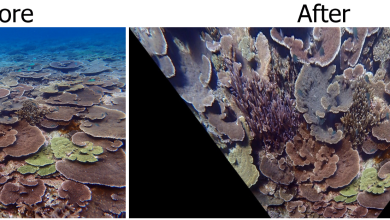An Environmental Science Major Looks Back at the Deepwater Horizon
It’s been two and a half years now since the Deepwater Horizon oil spill of April 20, 2010. It was a shocking explosion at the Macondo Prospect in the Gulf of Mexico that killed 11 people, injured an additional 17 and started releasing as much as 53,000 barrels of oil a day until it was capped three months later. It was an additional two months until the well was completely sealed. Pictures of animals coated in oil, volunteers working to clean them off, shiny black water and the ocean on fire flooded the news and internet. The tourism industry began to suffer as oil started washing up on the beaches. Fishermen suffered tremendously as their livelihoods were stripped out from underneath them. Protestors were screaming out for BP to be brought to justice.

Two and a half years later, the Gulf is beginning to recover, but BP and the United States governments have still not reached any sort of agreement regarding payment for damages. The primary point of dissent here is the degree to which BP is to be held negligent for the damages. Already, BP is accused of being grossly negligent due to the accusations and evidence suggesting that the company had knowledge of certain risks associated with drilling at the Macondo Prospect and chose to drill regardless of the risks. If BP is found to be negligent, they could be looking at paying $20 billion or more in damages to the U.S. government under the Clean Water Act, in addition to a proposed amount of about $7.8 billion to the local fishermen and others.
The first charges against BP were placed on April 24, 2012, just over two years after the spill occurred. Mr. Kurt Mix, a former engineer at BP, was charged with obstruction of justice for deleting over 200 text messages between him and a supervisor at BP that talked about the amount of oil going into The Gulf. This just goes to show how messy the world of politics, business, and law can be — that’s it’s taken this long to get to this point in the court process. And to add fuel to the dying fire there is new evidence to suggest there may still be some oil leaking from the Macondo Prospect into the ocean. It should be interesting to see how that new information plays out in court.
The BP oil spill was the second worst recorded oil spill in history, with 172 million gallons being released into the Gulf of Mexico. The only spill to surpass it was the Gulf War oil spill of 1991, in which 520 million gallons of oil were released into the Persian Gulf. However, the Gulf War oil spill was a purposeful spill that was determined not to be largely detrimental in the long term due to the evaporation of the oil and the fact that millions of barrels were able to be recovered.
As time goes on, the long term effects of the Gulf of Mexico oil spill should become more and more apparent. For now though, we can only hope for justice for the damage inflicted upon the Gulf ecosystem and the economy as a result of the BP oil spill. As an environmental science major, it will be one to watch and study the outcomes.






